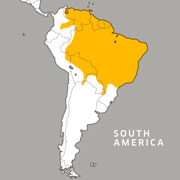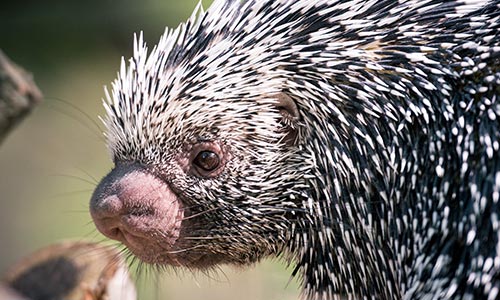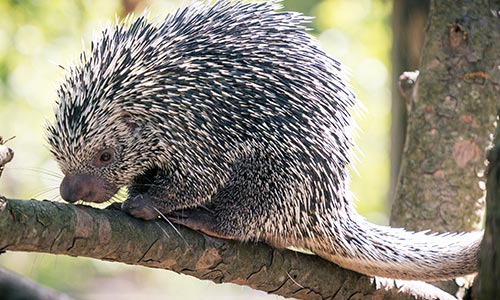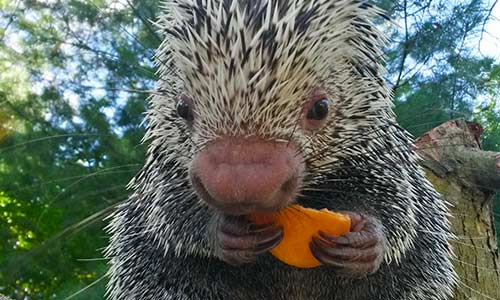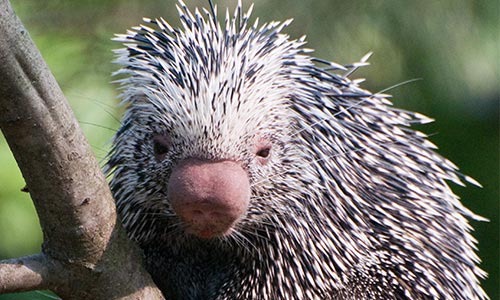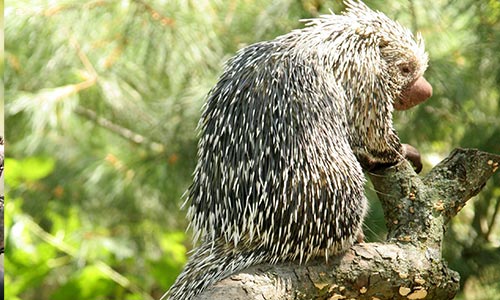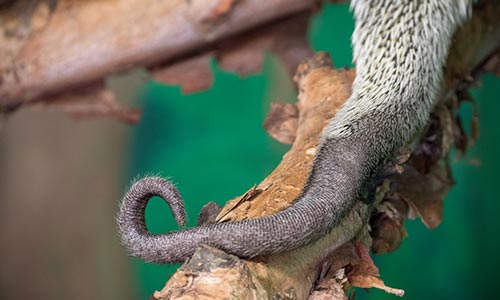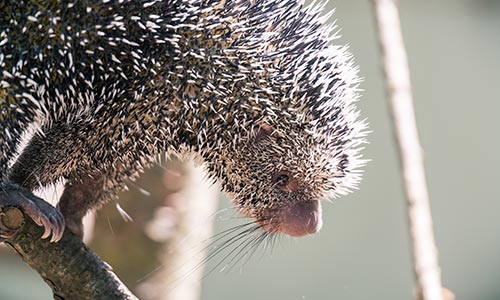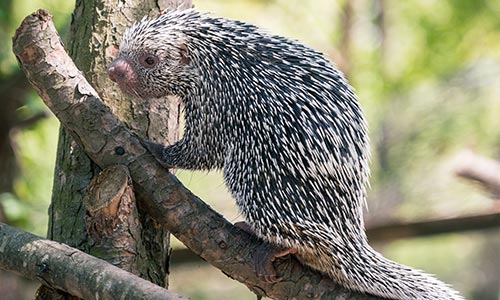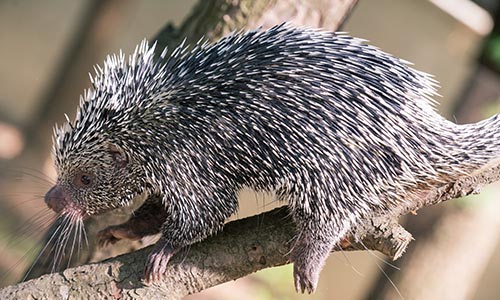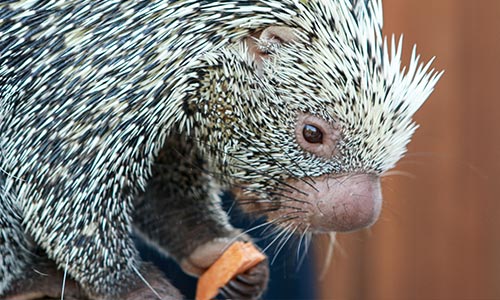Appearance:
Prehensile-tailed porcupines are brown or yellowish with short black and white quills. They are distinguished by their large, round, furless nose and long tail.
Size:
Length: 12 – 24 inches long. Their tails are almost as long as their bodies, adding another 13 – 19 inches.
Weight: 4 – 11 pounds. The tail, half of which is composed of muscle, accounts for 9% of their weight.
Diet:
They are herbivores that eat leaves, flowers, roots and bark. At Stone Zoo, they eat fruits, vegetables and monkey biscuits.
Reproduction:
Very little is known about how these porcupines court each other. Their courtship has not been well observed in the wild and they have no regular breeding season.
Gestation:
Their gestation period is about 203 days (7 months). Females usually give birth to a single offspring that weighs about 14 ounces. Newborns are covered in red fur and soft spines, which harden shortly after birth. Babies are pretty independent, born with their eyes open and able to walk and climb within days.
Behavior:
Prehensile-tailed porcupines are primarily arboreal and use their tails as a fifth limb as they roam through the trees. They have been reported to move trees each night to find food and only descend to the ground when they can’t reach another tree. Though they are excellent climbers, they cannot jump.
These animals are nocturnal and often spend the day sleeping in trees. They are solitary or paired, but may be found in small social groups during the day.
They stand on hind legs, raise quills and emit deep growls or high-pitched whines when threatened.
Role in Habitat:
They are seed dispersers within their ecosystem and a possible food source for large predators, like jaguars.
Habitat/Range:
Prehensile-tailed porcupines live in the South American forests of Venezuela, Guiana, Brazil, Bolivia, Paraguay, Trinidad and northern sections of Argentina.
Median Life Expectancy:
12-17 years
Threats in Wild:
Prehensile-tailed porcupines are occasionally hunted by humans for food and threatened by habitat destruction.
Fun Facts:
Porcupines are rodents which means they have teeth that grow for a long time. Unlike other rodents, they typically have a long lifespan and slow reproductive rate because they have such an impressive natural defense – their quills!
Prehensile-tailed porcupines can’t shoot their quills (no porcupine can)! Their quills are short and barbed and they detach easily when touched, embedding themselves in their predator.
Conservation:
This species is considered "least concern,” although it is sometimes killed for food and is a victim of habitat destruction. They are found in multiple protected areas within their range and part of an AZA Species Survival Plan.


